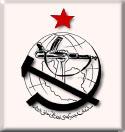Organization of the People's Fedajin Guerrilla of Iran
The Marxist-Leninist Organization of the People's Fedajin Guerrilla Iran ( Persian سازمان چريکهای فدايي خلق ايران Sazaman-e Cherikha-ye Feda'i Chalq-e Iran , OIPFG) was founded in 1971 with the aim ofoverthrowing Mohammad Reza Shah . After the overthrow of the Shah in January 1979 and the Islamic Revolution that followed , the OIPFG fought against the newly founded Islamic Republic of Iran .
History of origin
The OIPFG was formed as a merger of two small groups of the Jazani-Zarifi-Group and the Ahmadzadeh-Puyan-Meftahi-Group . The members of the Jazani Zarifi group were mostly former members of the Tudeh Party's youth organization , while the members of the Ahmadzadeh Puyan Meftahi group were former members of the National Front and its affiliated organizations.
The first meeting between members of the two groups was organized by Bijan Jazani in 1963 . In 1966 the two leaders of the groups Hassan Zia-Zarifi and Jazani agreed that the far-reaching influence of the United States in Iran could not be contained with peaceful demonstrations and that armed struggle was the only way to "liberate" Iran .
Terrorist activity
On February 8, 1971 (19th Bahman 1349), nine members of the two groups attacked a police station in the small village of Siahkal in Gilan Province in northern Iran. The aim of the action was to forcibly free previously arrested members of the group. This attack is commonly referred to as the beginning of active guerrilla warfare in Iran. Three police officers were killed in the action; seven attackers were killed and twelve wounded. After thirteen members of the group were arrested, sentenced to death and executed, the two groups decided to set up the People's Fedajin Guerrilla Organization of Iran (OIFPG) under the leadership of Hamid Ashraf. Major General Zia Farsiu , who signed the death warrants , was to become one of their first victims on April 7, 1971. Members of the OIPFG lay in wait for him in front of his house and shot him. Zia Farsiu and his driver were killed on the spot. His son was seriously injured. Three days before the attack, they attacked the police station in Gholhak, a district of Tehran, and shot the guard.
In the following years there was an armed struggle between the members of the OIPFG and the security forces of the SAVAK department responsible for internal security . By 1975 the SAVAK had either shot or arrested nearly all the leaders of the guerrilla movement. Only Hamid Ashraf always managed to avoid arrest by the secret service. It was not until 1976 that Hamid Ashraf was found. Ashraf and nine of his followers were shot dead in a large-scale attack on his hiding place.
cleavage
In 1979 the OIPFG split. Ashraf Dehghani left the OIPFG and founded the People's Fedajin Guerrilla Iran (IPFG). She accused the leadership of the OIPFG of giving up the armed struggle and only working as a purely political organization. After the Islamic Revolution, the OIPFG opened offices in all major cities in Iran to take part in the parliamentary elections. The OIPFG received 10% of the vote. After the election, there were fierce political discussions that led to the OIPFG breaking up. The majority agreed that the Islamic Republic was an anti-imperialist state and that the armed struggle must therefore be stopped. This branch of the OIPFG founded the People's Fedajin Iran (majority) (OVFI (M)) organization in 1980 , while the remaining members of the OIPFG founded the Fedajin (minority) organization .
Leading members
Prominent victims
See also
Individual evidence
- ↑ Archived copy ( memento of the original from October 15, 2008 in the Internet Archive ) Info: The archive link was inserted automatically and has not yet been checked. Please check the original and archive link according to the instructions and then remove this notice. unavailable June 4, 2017.
- ↑ http://www.aftab.ir/lifestyle/view.php?id=101804 ۱۹ فروردین سال ۱۳۵۰ ـ ترور «فرسیو» رئیس دستگاه قضایی ارتش accessed June 4, 2017.
- ↑ Gholam Reza Afkhami: The life and times of the Shah . University of California Press, 2008, p. 399.
- ↑ Abbas Milani: Eminent Persians . Syracuse University, 2008, pp. 101 f.



